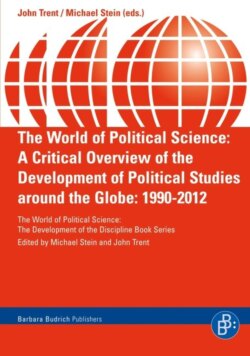Читать книгу The World of Political Science - Группа авторов - Страница 11
На сайте Литреса книга снята с продажи.
3. Political Science in Japan 3.1. Historical Background of Political Science in Japan
ОглавлениеJapanese political science started as staatslehre, adopted from Germany, a branch of study which is meant to provide the skeleton of major subjects deemed necessary for adequate knowledge and skills for young aspirant political leaders serving a modernizing Japanese state in the late 19th century (Inoguchi 1997). They included history, philosophy and economics. After dismantling feudal class distinctions in the 1870s, the modernizing government built schools to train future leaders. The primary purpose of building seven imperial universities was to generate key professional personnel in agriculture, engineering, medicine, science, law, economics, and foreign languages in order to quickly build a strong army and a rich country on the basis of enlightenment and entrepreneurship in Japanese society. The governing elite corps of the previous Tokugawa era (1603-1868) was exclusively recruited from the warrior class which comprised some 3-7 per cent of the population. After the medieval warring period which ended with the ascension of Ieyasu Tokugawa to power, the warrior class was first concentrated into urban castle towns of 300 odd semi-autonomous domains, and then disarmed to metamorphose themselves into bureaucrats. The suddenly disemployed former warrior class families were given a number of possibilities. A substantial number of their children assumed either academic or bureaucratic careers. Even in the 1920s one half of the Imperial University of Tokyo’s students were identified as originating from warrior class families. The warrior class’s distinctive features were (1) high levels of literacy including Chinese classics, (2) high level of self-discipline. These traits were regarded as essential for the new governing elite corps. It is remarkable that major universities set up schools and departments according to key applied professions such as medicine, agriculture, engineering, law and economics at the undergraduate level. It is even more remarkable that Japan continues untill today with a structure that was first created then in the new universities (Inoguchi 2005a).
Political science was submerged by staatslehre, the primary purpose of which was to train and nurture future cadres of the modernizing state. Staatslehre encompassed topics that served the state. The school of law at the undergraduate level comprised law, history, philosophy, economics and all other relevant courses such as public administration, diplomatic history, international law, colonial studies and military science. It was only in the 1920s that course of political science was installed in the curriculum of the Imperial University of Tokyo. During the period of fledgling democracy called Taisho democracy, a remarkably well developed academic discipline of political science was born. Glancing, for instance, at a political theory book of Prof. Kiheiji Onozuka, a founder of political science in Japan, one marvels at how quickly political science in Japan was able to advance in tandem with its American and European counterparts, which were then also at an incipient stage (Onozuka 1903).
Political science in Japan had another more traditional stream called historicism. This tradition became predominant in that researching historical documents and describing events and personalities in contextualized settings became a major mainstream endeavor of many academic disciplines, including political science. It is due, in part, to traditions of not arguing about the world using grandiose vocabulary (kotoagesezu) and not offering to generalize propositions and laws from observed human interactions. Even today, the trichotomous structure of political science curriculum in Japan consists of political history, political philosophy and political science – in all of which historical descriptive, textual criticism and interpretive approaches remain very strong. This traditional mainstream prospered as part of a quiet resistance to the government-led regulation of certain viewpoints within the limits imposed on the freedom of expression by the Internal Security Preservation Law, enacted in 1925.
Another stream is that of Marxism. This stream was pervasive during the half century period from 1920s through 1960s. During this period it was not an exaggeration to say that Japan was marxist. Marxism flourished under the Internal Security Preservation Law (1925-1945), during the occupation by the Allied Powers (1945-1952) and thereafter until roughly 1969. Marxism was attractive to many academics for a number of reasons. One of the most important was the fact that Marxism was an opposition science whereby one can combine thought and action while retaining a “scientific” style and role as an academic. Although they stayed aloof from power, many of those Marxist academics participated in politics even during the winter period of 1925-1945 and the American period of 1945-1952 (Barshay 2004).
A fourth stream of political science is that of American influence since the 1920s, but mostly since the 1950s. By 2000 this fourth stream had become very strong indeed. But it is important to note that it is a relatively new stream, and that it is much weaker in Japan than in neighboring countries such as South Korea, Taiwan and possibly in China as well. One can call South Korean and Taiwanese political science neo-colonial (Chung-In Moon) and Japanese political sciences as bumi putra (meaning that endogenous elements are deemed most important and somewhat impermeable to exogenous attempts at penetration) (Moon and Kim 2002: 45-68). It has something to do with the large domestic market for academic publication and with the tenacious resistance to efforts at enhancing English proficiency.
